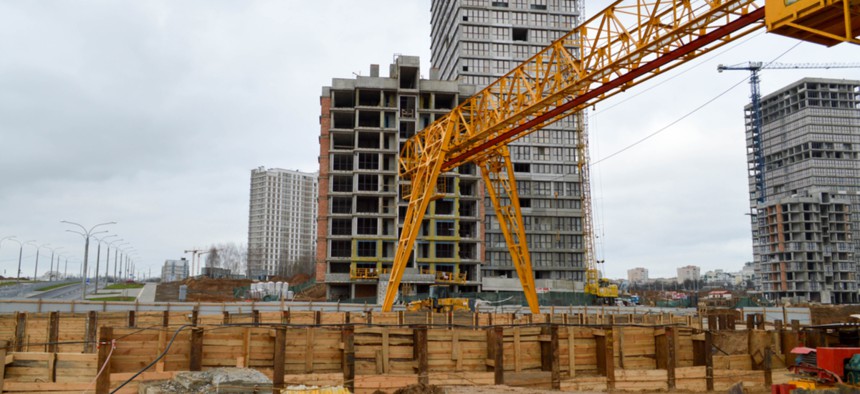The headline on the cover of Time magazine read “Sky High Housing.” Behind it was a graphic of a young couple and their dog looking upwards to the sky as their dream home floated away. The story was about rising home prices locking a generation of buyers out of the market. It was published on September 12, 1977, but might as well have been yesterday.
The United States has a housing crisis. By now, the facts of the problem are so familiar—growing homelessness, rents that are rising much faster than incomes are, the four million “supercommuters” who spend at least three hours driving to and from work—that the political conversation has moved toward what can be done to solve it.
On the surface, the answers are simple: Build more housing and expand subsidies for people who can’t afford what the private market has to offer.
But, as the 1977 Time cover shows, the lack of moderately priced housing, while never as severe as it is now, is a decades-old problem—and a problem that has resisted myriad efforts to solve it. And there’s a very simple reason why. Aside from developers—whose financial stake in getting houses and apartments built looks like a conflict of interest—the members of a pro-housing political constituency are difficult to identify. People who lose when new housing is blocked don’t even know who they are. Organizing people who don’t yet live somewhere is a seemingly impossible task. But it’s crucial to solving the housing-affordability crisis gripping much of the country. In many of the country’s most economically vibrant areas, existing homeowners—who have a financial stake of their own—pressure their local governments into blocking any new construction.
This problem has been vexing policy makers since the very beginning of the housing shortage. The first prominent mention of it came two years after 1977 Time article, when an MIT planning professor named Bernard Frieden published a book called The Environmental Protection Hustle, which was one of the first works to identify not-in-my-backyard (NIMBY) sentiment as an obstacle to constructing new homes. “The review process is highly political, and the people with the greatest stake in its outcome—housing consumers—play no part in it,” he wrote about local housing policies. “They are unorganized, and probably unorganizable.”






